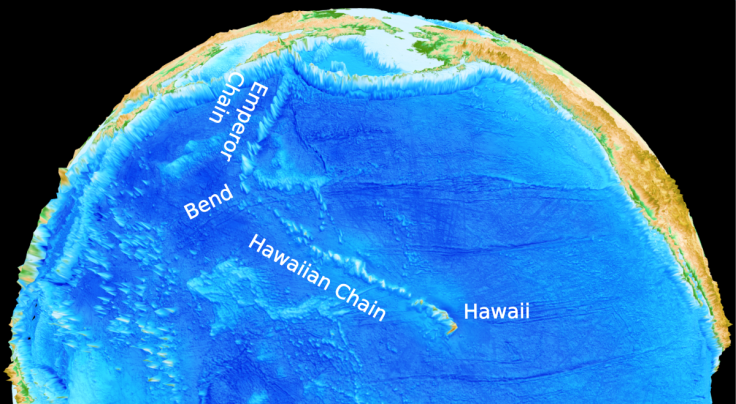Mystery bend in Hawaiian-Emperor seamount caused by movement near Earth's core

The long-standing mystery of how the Hawaiian-Emperor seamount chain got its 60 degree bend has been solved. Scientists found the bend was not caused by convection currents in the shallow mantle as previously believed, but by a movement of rocks deep down, close to the core.
The Hawaiian-Emperor seamount chain is a mountain range in the Pacific Ocean, most of which is underwater. There are more than 80 underwater volcanoes in the chain, stretching around 3,600 miles.
The chain – home to popular tourist islands Hawai'i, Maui, and O'ahu – has a 60 degree bend in its mountain range. This kink is not seen in any other seamount chain. Past studies suggested the bend was caused by a changing convection current in the mantle and tectonic plate movement.
Researchers from the University of Sydney believed the flow in the deep mantle below this chain was different to elsewhere on Earth. They analysed mantle evolution from the past 200 million years, by recreating 3D simulations of movement.
The results, published in Nature, show piles of rocks near to the core – which act as an anchor for the hot rock moving up through the mantle (mantle plume) – can change shape. This change occurs following rapid flow in the deep mantle.
The researcher's simulations showed this happened at the Hawaiian-Emperor seamount chain between 50 million and 100 million years ago. The movement of the anchoring rocks caused the mantle plume to tilt, generating the bend. Once the rocks stopped moving, the plume became vertical again, effectively ending the bend.
"These findings suggest the shape of volcanic seamount chains record motion in the deepest mantle, near the Earth's core," said Rakib Hassan, one of the study authors. "The more coherent and rapid the motion deep in the mantle, the more acute its effects are on the shape of seamount chains above."
Dietmar Müller, another author of the research, added: "Our results help resolve a major enigma of why volcanic seamount chains on the same tectonic plate can have very different shapes. It is now clear that we first need to understand the dynamics of the deepest 'Underworld', right above the core, to unravel the history of volcanism at Earth's surface."
© Copyright IBTimes 2025. All rights reserved.






















